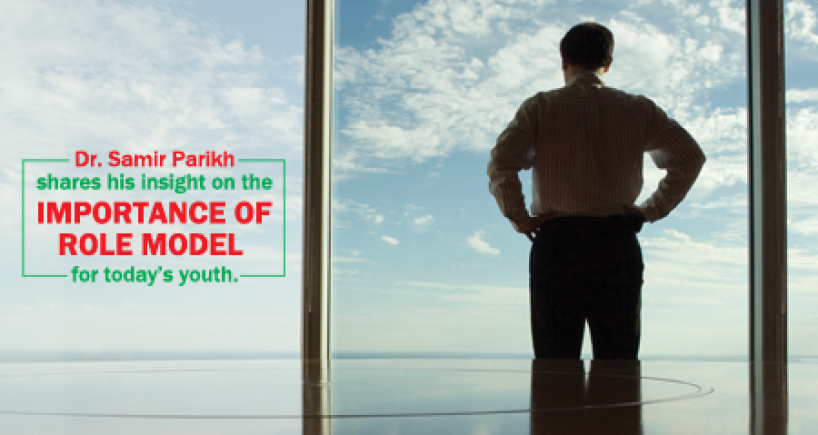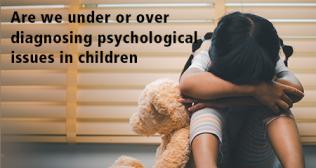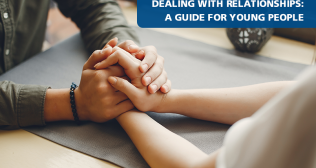
Role Model

For almost all of us, our aspirations and goals are majorly influenced by our conceptualization of a role model, someone who we admire and aspire to be like, who could be an individual within our social network, a public personality, or even a prototype or an ideal person. In fact, a large part of an individual’s self can actually be reflected in the choice of their role model. Further, vicarious learning is an essential aspect of social learning as we tend to acquire new behaviours through the observation of others’ around us in our everyday lives. Recognizing the potential impact of this choice, especially for the young minds which tend to be more impressionable, our Department of Mental Health and Behavioural Sciences recently conducted a survey on 3,500 students aged 14-18 years to study role models amongst the youth and explore the influence of their behaviour on these young minds.
During the initial years of life, children typically acquire behavioural responses by watching and modelling their parents or significant others. However, with growing years more diverse forms of social influences begin to have significance, including the school environment, peers, etc. To add to which, the wave of technological invasion ensures a greater exposure to the media as well. In line with this train of thought, we surveyed the popular choice of role models amongst teenagers.
Influence of Family
One of the most interesting findings of this survey is that as many as 40% of the students reported having a family member as their role model, with most of them modelling their parents, with an equal distribution between both mothers and fathers. The significance of such a finding not only highlights the significant influence that families continue to emanate in the minds of the youth, but also goes to show the importance attached by the participants to their family during the developmental phase of adolescence, which is characterized by a shift in attachment towards peers.
Parents and family members continue to be the most significant role models for the youngsters today, which carries with it strong implications for the extent of influence the behaviours of family members can have. This essentially implies that what family members do, children observe and tend to learn. Additionally, with the changing fabric of our society, inter-generational interactions between teenagers and grandparents must be emphasized, as such connect with grandparents can provide youngsters with a sense of cultural and historical rootedness and foster a greater sense of morality. Therefore, it is vital for parents and significant others within the family to model healthy and adaptive behaviours and to strengthen their communication patterns in order to inculcate positive attitudes and behaviours.
Media and Sports
It has been a common trend for teenagers to choose their role models from the fields of sports and media, which can be attributed to their attraction towards success and glamour associated with such fields. According to the findings of our survey, 17% students reported having a sportsperson as their role model, with Saina Nehwal, Virat Kohli and Sachin Tendulkar featuring among the most popular role models amongst teenagers. At the same time, role models in the media industry were reported by 15%, with Deepika Padukone being one of the most popular choices. In consideration of the appeal of youngsters towards both media and sports, it is important to pay attention to the utilization of this potential influence in the form of positive learning experiences for adolescents. One of the strongest implications of such a finding directs sports players and media celebrities to be encouraged to be involved in social campaigns which could be instrumental in creating awareness and bringing about attitudinal shifts within the society. At the same time, it also reiterates the need for such personalities to assume more responsibility in terms of portrayals of themselves, and also with regard to their choice of products or services to be endorsed by them, especially in the presence of impressionable youngsters who aspire to be like them.
Other Popular Choices of Role Models
When compared to other categories, political figures were perceived as role models for fewer students, at 10%. Students had followership mainly for historical figures, Mahatma Gandhi and Bhagat Singh being most frequent. In recent figures, PM Narendra Modi and APJ Abdul Kalam were reported highest. 8% students reported having business leaders like Ratan Tata, Dirubhai Ambani, Steve Jobs and Bill Gates as role models, and teachers closely followed suit with 7%, the lowest amongst all categories. This low percentage reflects the modern day disconnect between students and teachers, something that needs to be looked into collectively as a society.
Conclusion
It has been proven unequivocally that young minds learn by watching those around them. As supported by the findings of the survey, youngsters today still look up to adults to learn how to conduct themselves, a reality that has not yet changed. Such a tendency to learn by observations comes with its merits and disadvantages, based on how such social learning is cultivated. Both altruism and truancy are social behaviours that are learned by observing others. It is thus, the collective responsibility of adults, be parents, educators, or the media, to provide youngsters with positive, prosocial role models to foster a youth that is compassionate, empathetic and responsible.
Categories
Clear allMeet the doctor

- Mental Health and Behavioural Sciences | Mental Health and Behavioural Sciences | Psychiatry | Clinical Psychology
-
21 Years
-
900



















